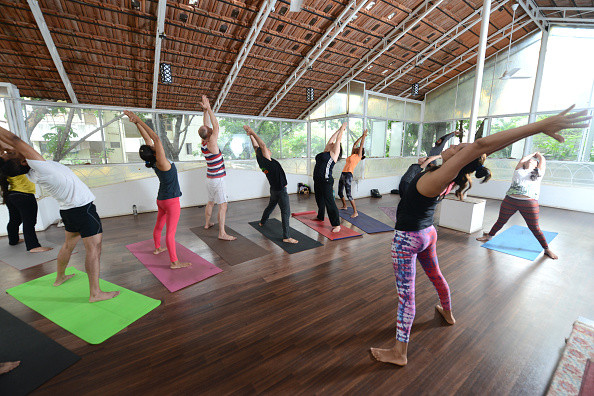Yoga relieves patients with atrial fibrillation thanks to breathing and relaxation

Yoga could offer potential relief to those who suffer from atrial fibrillation. Scientists claim the spiritual and physical discipline could improve patients' quality of life and negative symptoms, by reducing their heart rate and blood pressure.
A study, published on 13 March 2016 in the European Journal of Cardiovascular Nursing, looks at how yoga affects the physical and mental health of patients suffering from atrial fibrillation, which is the most common cardiac rhythm disorder in developed countries.
Those who suffer from it experience serious episodes, during which the heart suddenly beats significantly faster. This is accompanied by chest pain, dizziness and shortness of breath, and leads to am important degradation in quality of life.
"These symptoms are unpleasant and patients feel anxious, worried and stressed that an episode will occur. Many patients with paroxysmal atrial fibrillation can't live their lives as they want to - they refuse dinners with friends, concerts, and travelling - because they are afraid of an episode occurring," says lead author Maria Wahlström, from the Sophiahemmet University and the Karolinska Institute in Stockholm, Sweden.
Though a range of treatments, including stroke-preventing medication, is available to alleviate symptoms, many patients also use complementary therapy, such as yoga. The study's authors believe it is important to assess whether such therapies actually work.
Better physical and mental health
Eighty patients suffering from paroxysmal atrial fibrillation were divided randomly in to two groups. For twelve weeks, one participated in yoga classes with a qualified teacher, the other did not. Both still received traditional treatments.
The researchers compared a series of indicators, measured before and after the trial, such as heart rate and blood pressure. They also looked at the participants'answers to two questionnaires regarding quality of life, the Short-Form Health Survey (SF-36) and the EuroQoL-5D (EQ-5D) Visual Analogue Scale (VAS).
They found that people in the yoga group had higher mental health scores in the questionnaires, as well as a lower heart rate, and a lower blood pressure than the control group. They believe yoga techniques were directly responsible for this positive evolution.
Benefits of yoga techniques
"It could be that the deep breathing balances the parasympathetic and sympathetic nervous system, leading to less variation in heart rate. The breathing and movement may have beneficial effects on blood pressure", Wahlström explains.
Mental health may also benefit from yoga because patients feel more in control of their symptoms. "A lot of the patients are very stressed. Yoga should be offered as a complementary therapy to help them relax. It may also reduce their visits to hospital by lowering their anxiety until an episode stops", she added.
Further research will now be carried out to better understand how yoga techniques have an impact on symptoms. A larger study, involving 140 patients has now began, to specifically investigate the effects of the movement and deep breathing in yoga.
What is atrial fibrillation (AF) ?
AF is a very common cardiac rhythm disorder, affecting 1.5 to 2% of the general population in developed countries. This proportion increases as people grow older, and around 7% of those over 65 may suffer from it. In the UK, around one million people are affected.
A"normal" heart beats between 60 and 100 times per minute. For patients with AF, heartbeat exceeds this limit, sometimes beating considerably quicker than 100 beats/min. Symptoms include chest pains, dizziness, shortness of breath or heart palpitations. Patients are more at risk of stroke.
In the case of paroxysmal atrial fibrillation, investigated in this study, episodes come and go. They usually stop within 48 hours even when no treatment is undergone.
Treatments include medication to control heart rate and avoid strokes, cardioversion (controlled electric shock) or catheter ablation (part of the heart causing the problem is destroyed and sometimes a pacemaker is fitted to help restore regular heartbeat).
© Copyright IBTimes 2025. All rights reserved.






















